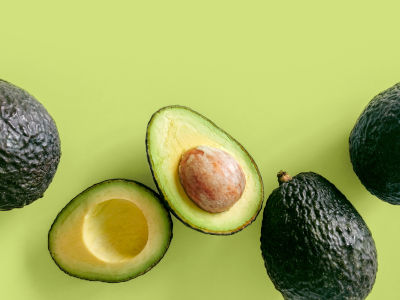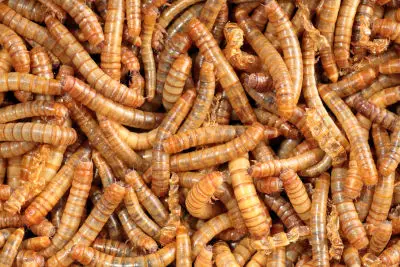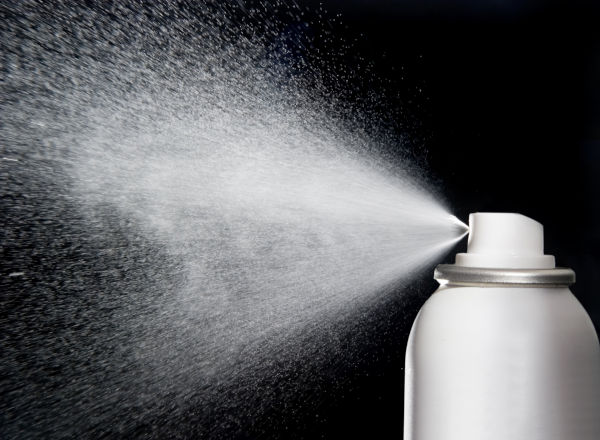How to Lower Humidity in Your Leopard Gecko Tank
If you want to make sure the humidity is correct in your Leopard Gecko enclosure (Click here to see my best device to measure humidity, on Amazon) you need to check the official readings. But how can you reduce it if it’s too high? Let me explain…
How can you reduce the humidity in a leopard gecko enclosure? You need to try the following: improve the airflow in the enclosure, replace a water dish with a smaller one, turn up the AC inside your house, replace porous substrate with tiles or use a dehumidifier.
| Are these foods dangerous for your Beardie? | |
| Avacado? Click here to learn, from this guide, if this food is dangerous |  |
| Superworms? Click here to learn, from this guide, if this food is dangerous |  |
Now that you know what you need to do to reduce the humidity. I will now go on to explain what is the ideal humidity for your Leo, how to regulate the humidity if it starts to get too low (the opposite), the ideal substrate to maintain the humidity and much more. Keep reading…
Steps to Reduce the humidity
Before you reduce the humidity it’s important to measure the humidity so that you can check the current status and more importantly make sure any changes you make can actually be quantified.
To do this you can simply use a hygrometer (Click here to see the price on Amazon). This is a device specialized to track and gauge the humidity in the enclosure.
Now that you have a way to track the humidity, I will tell you a few suggestions of how you can reduce the humidity.
Increasing Air Flow & Bowl reduction
One of the first things that you can do is try to increase the airflow in the enclosure. This will help to reduce the humidity.
With regards to the water bowls that you have in the enclosure. If you have a large water bowl, replace this right away with a smaller one because this will also help you.
AC & De-humidifiers
Other simple things that you can do is to turn the AC up in your house, which will help to regulate the humidity in a leopard geckos enclosure.
You can also purchase a dehumidifier which will also help to suck out some of the humidity in the atmosphere.
Making changes in the enclosure
To help reduce the humidity you can also remove any plants in the enclosure which could also be contributing to the humidity.
Finally, you should replace any substrate that could be impacting the humidity and replace it with tiles. For example, you might have soil in there, which generally helps to increase humidity.
What exactly is humidity?
In simple terms, humidity is a quantity which represents the amount of water vapor in the air. It is also used in relation to gas as well.
An example of this is, if you watch the news and listen out for the weather updates you will typically see a graphic or verbal update on the humidity levels in the air.
What is the ideal humidity for leopard geckos?
To maintain the ideal humidity you need to make sure that it stays between the range of 20 and 40%.
This ensures that your leopard gecko will stay nice and hydrated. But also, it will allow him to shed successfully as well, which is a very important part of their life cycle.
If you maintain this humidity you can avoid a couple of serious issues. In particular, if the humidity is too high it can increase the chances of pneumonia or skin related infections.
On the opposite side of things if the humidity is too low then there is a chance that your Leo could dehydrate which could lead to an early death.
Should you spray your leopard gecko with water?

Although you need to keep your leopard gecko cool and keep him hydrated you should not be spraying him directly with water.
Instead, you should be misting the enclosure which will inject water into the enclosure and will naturally evaporate and hydrate the skin. This is more like natural raindrops in the wild.
You could also buy specific devices which handle this for you on an automated basis which can reduce the chances of you forgetting.
What are the signs that my enclosure is too humid?
If you are keen to understand if your enclosure is too humid. As discussed earlier you can actually get a hygrometer to measure that humidity.
However, in the absence of one of these, there are obvious signs which you can use as an indication of this high humidity.
One of the obvious signs, which is absolutely free, is to check to see if your enclosure appears to be steaming or fogging up. This is an indication that it is too humid and you need to take action.
If it is too humid your leopard gecko may become sick, common problems revolve around repository issues.
How can you keep your enclosure humid (increase humidity)?
If you are concerned about regulating the humidity or keeping the humidity at the right level it’s important that you use the correct enclosure as well as the correct substrate.
The enclosure.
The enclosure should really be glass instead (Click here to see my best Glass Leopard Gecko enclosure, on Amazon) of mesh. Why? Because glass holds the humidity a lot more than mesh does. Mesh has other qualities but holding humidity is not one of them.
Substrate.
The substrate that you need to look for is the porous substrate such as soil (Click here to see my best soil substrate on Amazon). Avoid non-porous substrates such as crushed walnut or even sand for this reason.
Maintaining the soil to improve humidity.
Earlier I talked about soil being the ideal substrate to keep your enclosure humid. When dealing with soil it is important to have deep soil in particular approximately 3 inches deep.
This will keep the humidity at a good level. In addition to this, it is a good idea to have a weekly maintenance procedure where you will mix the soil.
Why? Because this will bring the moist soil from the bottom and mix it with the top, which might be drying out.
Keeping the Soil Moist
If you find that the soil is drying out you need to consider adding a little bit of water to it to keep it moist.
However, “moist” is the keyword not mushy. You do not want mushy substrate you want it to be nice and moist.
Related questions:
In this section, I will be answering some questions related to Leopard Geckos and humidity. If you have a question in your mind, that you feel has not been answered, feel free to drop a comment below.
Q: What plants help to improve humidity?
When you are looking for plants the key thing you are looking for is good transpiration rates. What is transpiration rates? It is the measure of how quickly plants release water from their leaves. Therefore it is a good indication that it will help you to keep the enclosure humid, are you with me?
The Areca Palm plant.
This plant is ideal for the enclosure because it keeps it humid. In fact, it is one of the best plants for this and has excellent transpiration rate.
The rubber plant.
The rubber plant is another good candidate for the enclosure. One of the good things about this plant it can tolerate drier soil and is good to deal with that if that’s something that you need. On top of this, it also has a very good transpiration rate.
Q: How cold is too cold for a leopard gecko?
Ideally, 88-92 degrees Fahrenheit on the warm end. If you find that you are not achieving that then you need to look into your enclosure heating. If the temperature is not correct this can affect their lifespan.
Q: Should you be concerned if your Leo is cold when you touch him?
Not necessarily. The key thing is they are cold-blooded. What?…
Well, this means they are not built like us. We have a way to regulate our body temperature (to an extent). However, Leos, and lizards, in general, require direct heat to keep them warm. Hence the reason they need a basking spot to help to regulate this.
Q: Do leopard geckos smell?
No. However, their enclosure may give the impression that they smell, are you with me? Basically, if you neglect to clean up after them, for example, leave feces in the tank for days, then naturally, it will smell. Know what I mean?